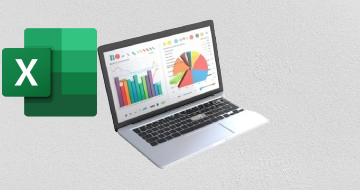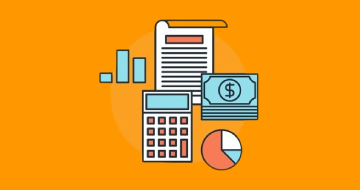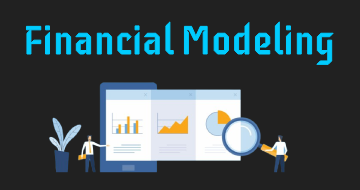IIRF Online > Finance & Accounting > Financial Modeling & Analysis > Financial Modeling > Financial Modeling: Build a Complete DCF Valuation Model
Financial Modeling: Build a Complete DCF Valuation Model by Udemy
The Ultimate Guide to Company Valuation For Aspiring Investment Bankers and Corporate Finance Practitioners
Course Highlights
- Be able to build a Cash Flow statement
- Know how to value a company
- Be able to build a Valuation model from scratch
- Know how to create a model with multiple scenarios
- Be able to perform sensitivity analysis
- Know how to create professional and good-looking advanced charts
Skills you will learn!
Curriculum
4 Topics
Why value a company?
Company valuation - Theoretical framework
The investor's perspective
What drives a firm's value?
8 Topics
Calculating Unlevered free cash flows
Using an appropriate discount factor
Estimating cost of debt
Estimating cost of equity
Forecasting future cash flows
Caclulating Terminal value
Discounting future cash flows
Calculating Enterprise and Equity value of the firm
4 Topics
Learning by doing - Learn how to value a company - Case study introduction
A quick summary of the various stages of a complete DCF valuation
Let's go through the structure of the DCF model we will create in Excel
A glimpse at the company we are valuing - Cheeseco
5 Topics
Modeling the top line of the financial model
This is how you can build flexible financial models in Excel
Modeling other items: Other revenues and Cogs
Modeling other items: Operating expenses and D&A
Modeling other items: Interest expenses Extraordinary Items and Taxes
5 Topics
How to forecast balance sheet items - The practical and easy to understand way
A key concept for finance practitioners - the "Days" methodology
Learn how to calculate "Days"
How to use "Days" in order to project the future development of some BS items
Forecasting Property plant & equipment Other assets and Other liabilities
4 Topics
Excel best practices! Create a good-looking and clean output sheet in your model
Applying what we learned in practice - Populating the P&L sheet
This is how you can create a clean output Balance Sheet in your financial model
Completing the Output BS Sheet For the Historical Period
5 Topics
Learn how to calculate unlevered free cash flows
Important! Reconcile UFCF to Net Cash flow
A very useful lesson! Learn how to calculate cash flows
Arriving to actual net cash flow figures and performing a check with cash
The fast and effective way to modify multiple cell references in Excel
2 Topics
Introducing weighted average cost of capital and perpetuity growth rate
Learn how to find the present value of future cash flows in financial models
2 Topics
Calculating continuing value and enterprise value of the business
Final steps! Calculate equity value of the business under consideration
5 Topics
Excel tools in practice - sensitivity analysis for WACC and perpetuity growth
Excel tools in practice - An application of Goal Seek
Recap of the financial model with charts and hypothesis testing
Congratulations! You made it!
Introduction to Mergers & Acquisitions
31 Topics
Organizing external inputs in a 'Drivers' sheet
The input data we will work with
Forecasting Tesla's expected deliveries
Comparing delivery figures with the ones of industry peers
Estimating an average selling price of Tesla vehicles
Calculating automotive revenue
Peer comparison: Gross profit %
Calculating automotive gross profit
Calculating automotive cost of sales
Forecasting 'energy' and 'services' revenue
Calculating 'energy' and 'services' gross profit and cost of sales
Forecasting operating expenses
Building a fixed asset roll forward: estimating Capex
Building a fixed asset roll forward: D&A schedule
Peer comparison: D&A as a percentage of revenues
Calculating DSO DIO DPO
Producing a clean P&L output sheet
Fill in the P&L output sheet
Calculating investments in working capital
Forecasting unlevered free cash flow
Forecasting other assets
Forecasting other liabilities
Completing unlevered free cash flow
Modeling Tesla's financing needs in the forecast period
Calculating net income
Bridging unlevered free cash flow to net cash flow
Balancing the Balance sheet
Estimating Weighted average cost of capital (WACC)
Performing discounted cash flow valuation (DCF)
Calculating enterprise value equity value and price per share
Final comments
13 Topics
What are valuation multiples and why we use them?
What types of valuation multiples are there?
Trading vs transaction valuation multiples
Main principles of multiples valuation
Comparison of earnings multiples (P/E vs EV/EBITDA)
Introduction to the exercise
High-level assessment of peer companies
Assessment of P&L data - comparable companies
How to adjust EBIT - theoretical framework
How to adjust EV - theoretical framework
How to adjust EBIT - practical example - Volkswagen
How to adjust EV - practical example - Volkswagen
Conclusion of the practical exercise
1 Topic
Next steps

Financial Modeling: Build a Complete DCF Valuation Model






